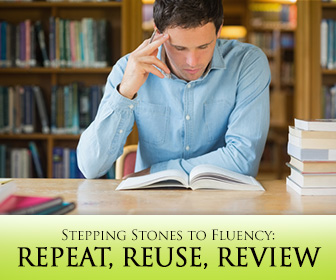How to Teach the Real, Unreal, and Past Conditionals


I was really impressed. How did they do that? These intermediate students who had been the U.S. for years, in some cases, had some conversational English but very little academic English or more “advanced” grammar.
Then I remembered. Well, they knew how to use the conditional because I had taught it in class.
It seems strange that a teacher would be surprised that a student would actually know something the teacher herself had taught, but there is that element of shock sometimes in seeing progress in students because so much of what we teach in English classes goes unlearned (begging the question if we really taught it). This lack of learning of the “taught” curriculum occurs for a variety of reasons, primary among them the need for more practice than students generally get in an ESL class. Some of the students in this class were native-born Americans, or had lived here for many years, yet they remain intermediate English learners because they spend most of their time in their cultural communities and were not able to use English much of the day.
Given these circumstances of many ESL students’ lives, the teacher’s job in ensuring students actually learn what is taught becomes harder to accomplish, but it is possible to make sure that students get adequate practice of English to progress. Mainly, students cannot be introduced to a structure such as the conditional and be expected to learn it from limited exposure. Rather, the instructor must set up conditions to repeat, reuse, reformulate, and review the material.

The first step in ensuring student learning is to explicitly teach the material. Adult students in particular generally have to have a structure such as the conditional explicitly introduced, discussed, and clearly modeled with numerous examples, both orally and visually. They may not respond well to more implicit or indirect instruction that is sometimes used with younger learners, who may learn their second language much like their first. To further process the structure, adult students must be able to ask questions about it: which forms of it are correct, how it may be used, what situations it can be used in, and so forth. Toward the end of a session in which the target form has been introduced, the instructor can begin asking questions of volunteers in the target form: for example, “What will you do tomorrow if it rains?” and “Where would you have gone if you hadn’t moved to California?” Hearing and responding to questions such as these gives students some initial exposure to and practice with the form. They can also ask and answer questions of each other in pairs and small groups for more practice.
The material must be continually repeated if students are to learn it. The instruction of a form like the conditional, which is widely used throughout academic English for discussing hypothetical situations, should not stop at the end of a single lesson: the material should be repeated and reused the next day--and the next. Students will not be bored, usually, when, the day after the introduction of the conditional, they are asked at the beginning of class “What are you going to do if your last class of the day is cancelled?” Such repetition, a little each day, further reinforces learning and ensures that students will acquire the form.
Students at some point begin using the form on their own, without teacher prompting, showing that acquisition of the material is taking place. Teachers can use the opportunity of hearing students using the newly learned material on their own by extending the discussion for further practice: for example, “Oh, so you’ll go home for a visit if you get the time this winter break. What else will you do, if you have the time and money?” provides a chance for an exchange using the target form in a different but still common context.
After two or three weeks of practice of the curriculum, the real and unreal conditional, in this case, there will often be a unit quiz on the material. Preparation of the quiz is a good opportunity to spend the better portion of a class session reviewing its varying uses--depending on the level of the student--of the conditional: both the real and unreal forms, as well as use in varying tenses. Students can practice in different group formations: individually, in pairs, and in small groups, reviewing both written and spoken material.
Learning of a complex but ubiquitous form like the conditional cannot stop with the unit test, of course. The instructor should revisit the material throughout the term, using different genres and formats, such as a short reading in academic English, which almost always will have contextualized uses of the conditional. Even music can be used, such as a clip from “Fiddler on the Roof,” with the main character Tevye singing “If I Were a Rich Man,” a clear example of the unreal conditional. Even more common, everyday uses of the form, such as giving advice or a warning “If I were you, I would--” or “I wouldn’t do that if I were you!” can be used almost impromptu as opportunity arises.
Rather, opportunities must be created by the instructor to continually repeat, reuse, reformulate, and review the material.
What activities do you find work well in helping students acquire a form?